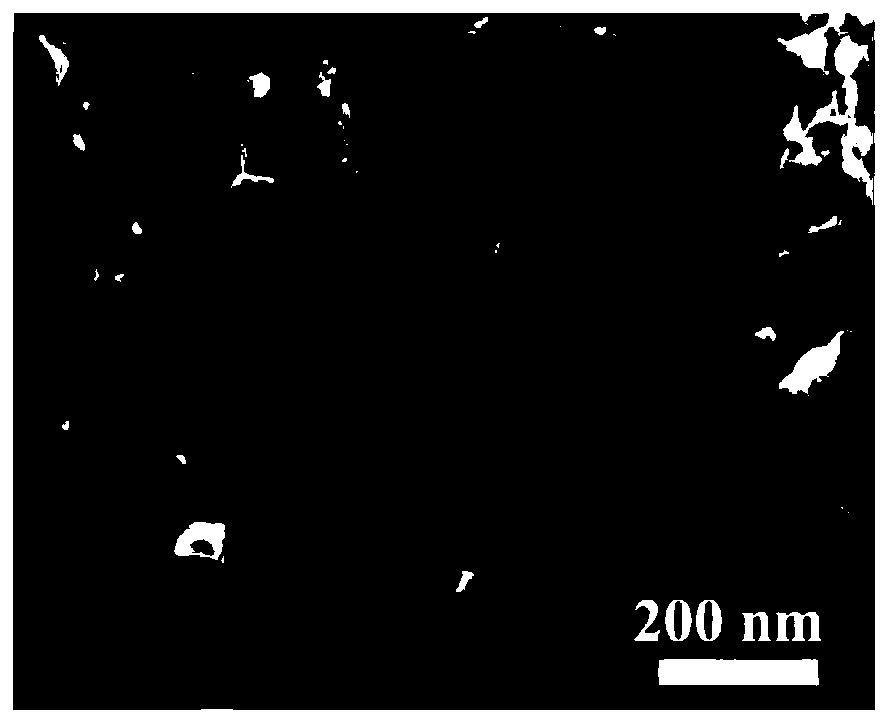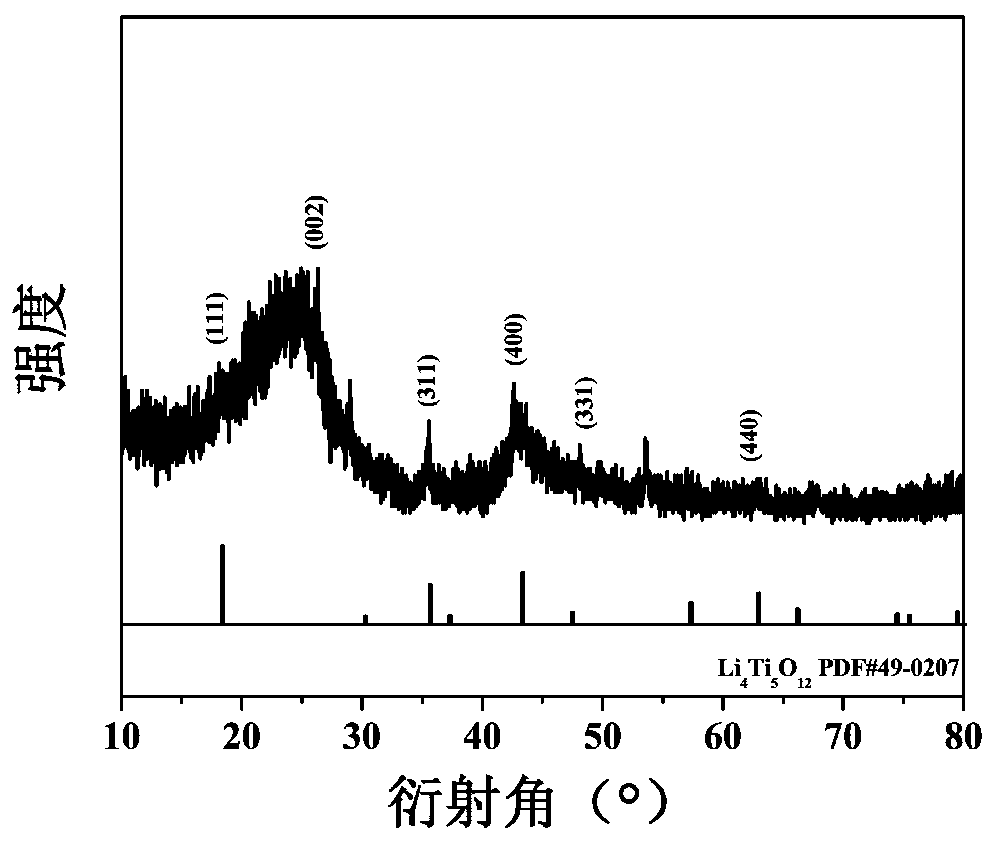Method for preparing carbon nanotube array supported lithium titanate flexible electrode material
A carbon nanotube array and flexible electrode technology, which is applied in the field of electrochemical energy storage, can solve the problems of difficult control process steps, cumbersome and complicated preparation process, and low orientation of carbon nanotube arrays, and achieve good structural stability and shorten diffusion path, the effect of reducing contact resistance
- Summary
- Abstract
- Description
- Claims
- Application Information
AI Technical Summary
Problems solved by technology
Method used
Image
Examples
Embodiment 1
[0038] (1) Utilize impregnation method to support carbon nanotube catalyst on carbon cloth;
[0039] Dissolve 3.00 g of iron acetylacetonate, 1.14 g of aluminum acetylacetonate, 1.61 g of 1,2-hexadecanediol, 0.9 g of oleic acid, and 0.9 g of oleylamine in a mixed solution of 50 mL of dibenzyl ether, and use the reflux method to A carbon nanotube catalyst was prepared, wherein the reflux temperature was 200° C. and the reflux time was 60 min to obtain a carbon nanotube catalyst. Then soak the carbon cloth in the carbon nanotube catalyst solution, take it out and dry it, and obtain the carbon cloth carrying the carbon nanotube catalyst.
[0040] (2) In-situ vertical growth of carbon nanotube arrays by chemical vapor deposition;
[0041] The carbon of the supported carbon nanotube catalyst prepared in step (1) is arranged in the constant temperature zone of the tube furnace, and under vacuum conditions, the tube furnace is heated to 850 ° C under the protection of an argon gas a...
Embodiment 2
[0051] (1) Utilize impregnation method to support carbon nanotube catalyst on carbon cloth;
[0052] Dissolve 3.00 g of iron acetylacetonate, 0.57 g of aluminum acetylacetonate, 3.22 g of 1,2-hexadecanediol, 0.30 g of oleic acid, and 2.25 g of oleylamine in a mixed solution of 50 mL of dibenzyl ether, and use the reflux method to A carbon nanotube catalyst was prepared, wherein the reflux temperature was 220° C. and the reflux time was 240 min to obtain a carbon nanotube catalyst. Then soak the carbon cloth in the carbon nanotube catalyst solution, take it out and dry it, and obtain the carbon cloth carrying the carbon nanotube catalyst.
[0053] (2) In-situ vertical growth of carbon nanotube arrays by chemical vapor deposition;
[0054] The carbon of the supported carbon nanotube catalyst prepared in step (1) is arranged in the constant temperature zone of the tube furnace, and under vacuum conditions, the tube furnace is heated to 700 ° C under the protection of an argon ga...
Embodiment 3
[0059] (1) Utilize impregnation method to support carbon nanotube catalyst on carbon cloth;
[0060] Dissolve 0.6g of iron acetylacetonate, 0.57g of aluminum acetylacetonate, 4.385g of 1,2-hexadecanediol, 1.8g of oleic acid, and 0.2g of oleylamine in a mixed solution of 200mL of dibenzyl ether, and use the reflux method to A carbon nanotube catalyst was prepared, wherein the reflux temperature was 300° C. and the reflux time was 1 min to obtain a carbon nanotube catalyst. Then soak the carbon cloth in the carbon nanotube catalyst solution, take it out and dry it, and obtain the carbon cloth carrying the carbon nanotube catalyst.
[0061] (2) In-situ vertical growth of carbon nanotube arrays by chemical vapor deposition;
[0062] The carbon of the supported carbon nanotube catalyst prepared in step (1) is arranged in the constant temperature zone of the tube furnace, and under vacuum conditions, the tube furnace is heated to 1200 ° C under the protection of an argon gas atmosp...
PUM
| Property | Measurement | Unit |
|---|---|---|
| Size | aaaaa | aaaaa |
Abstract
Description
Claims
Application Information
 Login to View More
Login to View More - R&D
- Intellectual Property
- Life Sciences
- Materials
- Tech Scout
- Unparalleled Data Quality
- Higher Quality Content
- 60% Fewer Hallucinations
Browse by: Latest US Patents, China's latest patents, Technical Efficacy Thesaurus, Application Domain, Technology Topic, Popular Technical Reports.
© 2025 PatSnap. All rights reserved.Legal|Privacy policy|Modern Slavery Act Transparency Statement|Sitemap|About US| Contact US: help@patsnap.com



